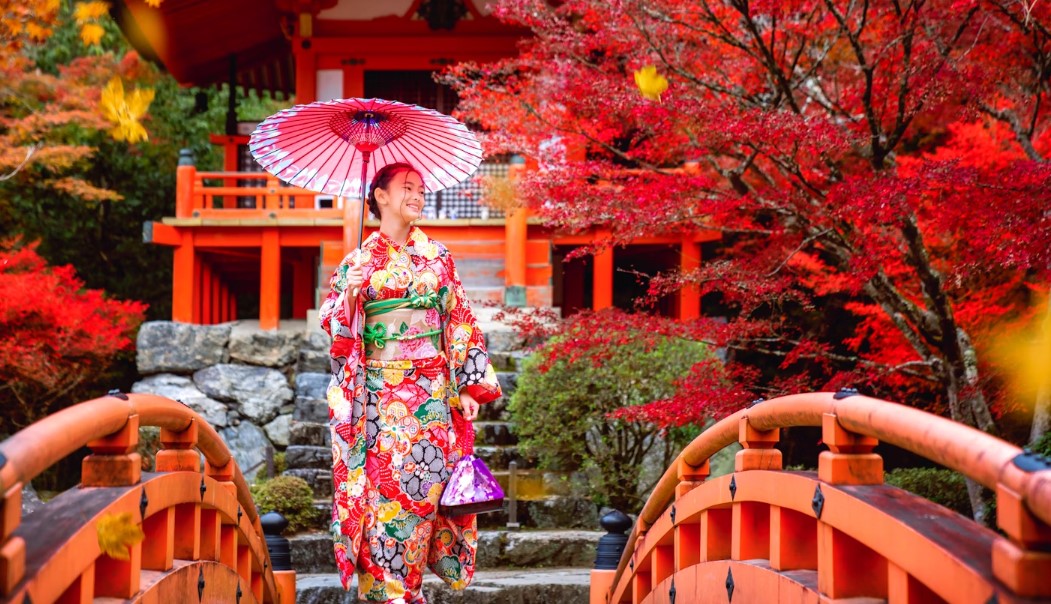Did you know that Japan experiences cherry blossom season in the spring, attracting millions of tourists from around the world? This stunning natural phenomenon paints the country in delicate shades of pink and white, creating an enchanting atmosphere.
But the cherry blossoms are just one aspect of Japan’s diverse climate and seasonal beauty. Whether you’re seeking vibrant autumn foliage, snowy landscapes, or outdoor adventures, understanding Japan’s weather patterns is essential for planning your trip.
Imagine stepping into a world where tradition and modernity seamlessly blend, where ancient temples coexist with neon-lit skyscrapers. Meet Sarah, an avid traveler from the United States who has always dreamt of experiencing the magic of Japan.
As she begins researching her trip, she realizes that choosing the best time to visit can be overwhelming. She wants to witness the cherry blossoms in their full glory, explore the bustling streets of Tokyo, and soak in the tranquility of traditional Japanese gardens. But with Japan’s unique climate, she knows she needs expert guidance to make the most of her journey.
Seasonal Guide ─ Spring in Japan
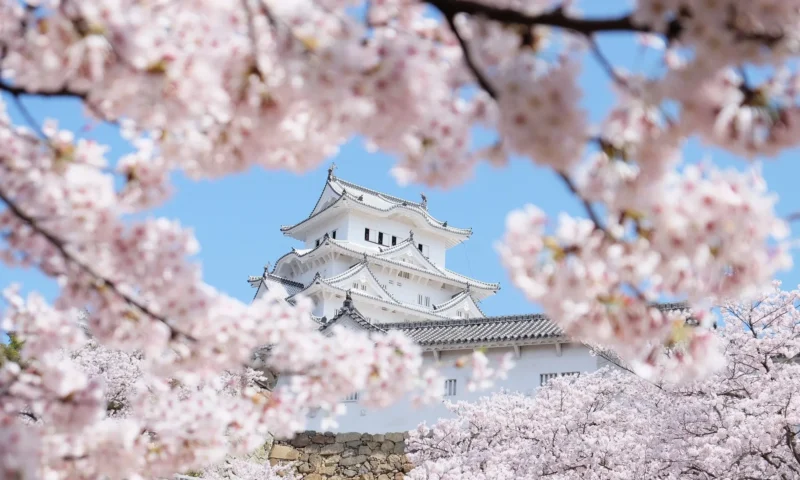
Spring (March to May) is one of the best times to visit Japan. The weather is mild and comfortable, and cherry blossoms are in full bloom, creating a beautiful and picturesque scenery. Locations such as Kyoto, Tokyo, and Osaka are particularly popular during this time, attracting tourists from all over the world.
It’s recommended to plan your trip in advance and book accommodations early, as this is a busy season in Japan. Additionally, May is a great time to visit, as the cherry blossom season ends, and the countryside becomes lush with green foliage.
Here are some Japan travel tips for visiting during spring:
- Check the cherry blossom forecast to make sure you don’t miss the peak bloom.
- Visit popular cherry blossom viewing spots like Ueno Park in Tokyo or Maruyama Park in Kyoto.
- Experience hanami, the traditional Japanese custom of enjoying the beauty of cherry blossoms, by having a picnic under the trees.
- Explore local festivals and events that celebrate the arrival of spring.
- Take advantage of the pleasant weather and visit outdoor attractions like gardens and temples.
Whether you’re a nature lover or simply looking to immerse yourself in the beauty of Japanese culture, spring is a wonderful time to visit Japan. Don’t miss the opportunity to witness the breathtaking cherry blossoms and enjoy the vibrant atmosphere that fills the streets and parks.
Quotes:
“Spring in Japan is a magical time when the entire country is transformed into a sea of delicate pink flowers. It’s an experience that should be on everyone’s bucket list.” – Sarah Thompson, Travel Blogger
“The cherry blossoms in Japan are unlike anything I’ve ever seen. The way they blanket the streets and parks is truly a sight to behold.” – David Rodriguez, Photographer
Spring Festivals in Japan
| Festival | Location | Date |
|---|---|---|
| Hirosaki Cherry Blossom Festival | Hirosaki, Aomori | April 23 – May 5 |
| Takayama Spring Festival | Takayama, Gifu | April 14-15 |
| Kurayami Matsuri | Takasago, Hyogo | April 30 – May 1 |
| Yayoi Festival | Nara, Nara | March 13 |
These festivals offer a unique opportunity to immerse yourself in Japanese culture and witness traditional performances and parades. They are a testament to the rich heritage and customs of Japan, providing visitors with unforgettable memories.
Seasonal Guide ─ Summer in Japan
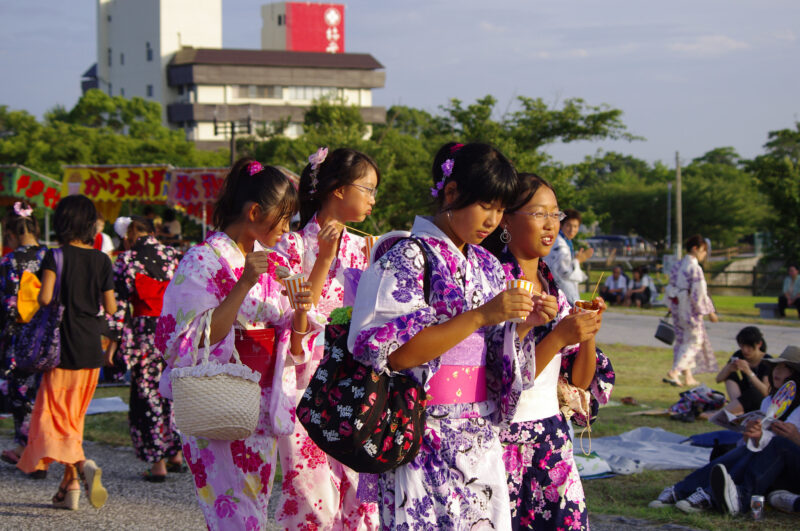
Summer (June to August) in Japan is characterized by hot and humid weather, especially in the major cities. However, it provides ideal conditions for outdoor activities, such as hiking in the Japanese Alps and exploring national parks in Hokkaido.
It’s important to note that the rainy season occurs from the end of May until mid-June or July, which can affect travel plans. If you’re planning to visit during the summer, it’s advisable to pack light and breathable clothing, stay hydrated, and be prepared for occasional rain showers.
Outdoor Adventures
Japan’s summer is perfect for outdoor enthusiasts seeking adventure. The Japanese Alps offer breathtaking hiking trails and scenic landscapes that attract both locals and tourists alike. From challenging climbs to leisurely walks, there are options for all skill levels.
Exploring national parks in Hokkaido, such as Shiretoko National Park or Daisetsuzan National Park, is another popular choice, offering opportunities for wildlife encounters and picturesque views.
Beating the Heat
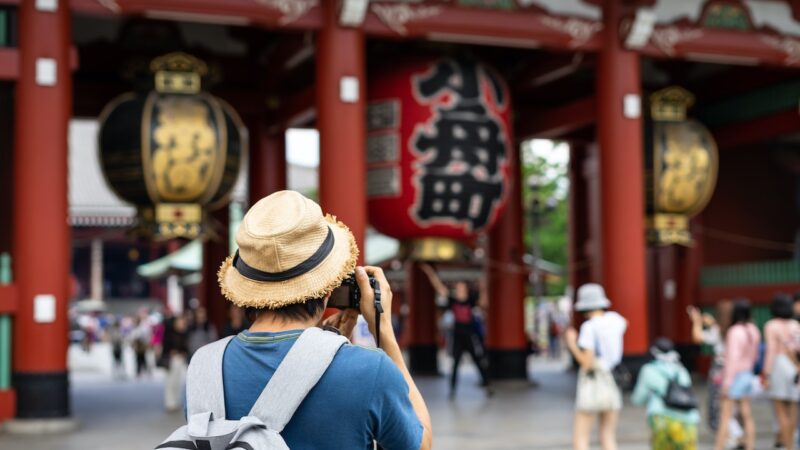
While summer in Japan can be hot and humid, there are ways to stay cool and enjoy your trip. Make sure to drink plenty of water and stay hydrated throughout the day. Seek shade or spend time indoors during the hottest hours of the day.
Take advantage of the numerous water activities available, such as visiting beaches or enjoying water parks. Don’t forget to bring sunscreen, a hat, and sunglasses to protect yourself from the sun’s rays.
Japanese Festivals
Summer in Japan is synonymous with colorful festivals and vibrant celebrations. One of the most famous festivals is Obon, a time when ancestral spirits are believed to return to the earthly realm. Participants dress in traditional yukata and participate in Obon dances.
Fireworks festivals, known as hanabi, are also a highlight of the summer season. Locals and visitors gather to watch spectacular firework displays accompanied by live music and food stalls.
| Pros | Cons |
|---|---|
| Ideal conditions for outdoor activities | Hot and humid weather in major cities |
| Breathtaking hiking trails in the Japanese Alps | Possible disruption due to the rainy season |
| Opportunities for wildlife encounters in national parks | Need to pack light and breathable clothing |
| Colorful festivals and vibrant celebrations | Potential for occasional rain showers |
Seasonal Guide ─ Autumn in Japan
Autumn (September to November) is another popular season to visit Japan. The weather during this time is mild and comfortable, making it ideal for outdoor activities and exploration. However, the main attraction of autumn in Japan is the stunning display of vibrant colors that grace the landscapes.
As the leaves change, the scenery transforms into a beautiful canvas of red, orange, and yellow hues, creating a truly enchanting experience.
One of the most renowned destinations for autumn foliage is Kyoto. The city’s iconic temples and gardens, such as Kiyomizu-dera and Tofuku-ji, become even more breathtaking when surrounded by the vivid colors of fall. In addition to Kyoto, there are many other locations throughout Japan where you can witness the captivating autumn foliage.
View this post on Instagram
It’s important to note that autumn is a busy season for tourism in Japan. To ensure a smooth and enjoyable trip, it’s recommended to plan in advance and book accommodations early. This will allow you to secure the best accommodations and avoid any potential difficulties due to high demand.
Furthermore, autumn is also an excellent time to explore the northern regions of Japan. In Hokkaido, for example, you can experience not only the beauty of autumn foliage but also the charm of snowy landscapes. Festive events and winter sports opportunities make the northern regions a captivating destination during this season.
| Top Destinations for Autumn Foliage | Best Time to Visit | Key Attractions |
|---|---|---|
| Kyoto | Mid-November | Kiyomizu-dera, Tofuku-ji, Arashiyama Bamboo Grove |
| Tokyo | Mid-November | Shinjuku Gyoen National Garden, Ueno Park, Meiji Jingu Shrine |
| Hokkaido | Mid-October to early November | Daisetsuzan National Park, Lake Toya, Shiretoko National Park |
| Nikko | Mid-October to early November | Toshogu Shrine, Nikko National Park, Lake Chuzenji |
Visiting Japan during autumn allows you to witness the breathtaking beauty of nature and immerse yourself in the rich cultural heritage of the country. Whether you’re exploring the bustling streets of Kyoto or discovering the serene landscapes of Hokkaido, autumn in Japan promises a truly memorable journey.
Seasonal Guide ─ Winter in Japan
Winter (December to February) in Japan offers a unique experience, especially in the northern regions. It’s a snowy season, but the locals brighten the dark days with a variety of festivals and events.
If you’re interested in winter sports, Hokkaido is a great destination with its renowned ski resorts. It’s important to pack warm clothing and be prepared for cold temperatures. While winter may not be the peak tourist season, it’s an opportunity to experience a different side of Japan and enjoy the festive atmosphere.
During winter in Japan, the landscapes transform into a winter wonderland. The northern regions, such as Hokkaido and Tohoku, receive heavy snowfall, creating picturesque snowy landscapes.
These regions offer a wide range of winter activities for visitors to enjoy. Skiing, snowboarding, and snowshoeing are popular options for adventure enthusiasts. Hokkaido’s Niseko, known for its excellent powder snow, attracts skiers from all over the world.
Additionally, winter in Japan is full of vibrant festivals and celebrations. The Sapporo Snow Festival, held in February, is one of the highlights of the winter season. Massive snow and ice sculptures adorn Odori Park, attracting millions of visitors.
The festival also features food stalls, concerts, and various entertainment activities. Another must-visit winter event is the Otaru Snow Light Path Festival, where the charming town of Otaru is illuminated by thousands of snow lanterns.
| Winter Highlights in Japan | Location |
|---|---|
| Sapporo Snow Festival | Sapporo, Hokkaido |
| Otaru Snow Light Path Festival | Otaru, Hokkaido |
| Yuki Akari no Michi | Aomori, Tohoku |
| Shirakawa-go Winter Light-Up | Shirakawa-go, Gifu |
Winter is also an excellent time to indulge in Japan’s delicious hot cuisine. Warm up with a bowl of steaming hot ramen, indulge in hot pot dishes like shabu-shabu or sukiyaki, and savor seasonal treats like freshly roasted chestnuts and sweet wagashi (traditional Japanese sweets).
When planning a winter visit to Japan, keep in mind that temperatures can be quite cold, especially in northern areas. It’s essential to pack thermal clothing, layer up, and wear appropriate winter gear such as snow boots and insulated jackets. Be sure to check the weather forecast and look for any advisories or closures related to heavy snowfall.
While winter may not be the traditional peak tourist season in Japan, it offers a unique and enchanting experience. Whether you’re exploring winter wonderlands, enjoying festive events, or indulging in hot winter cuisine, Japan will captivate you with its charm and hospitality.
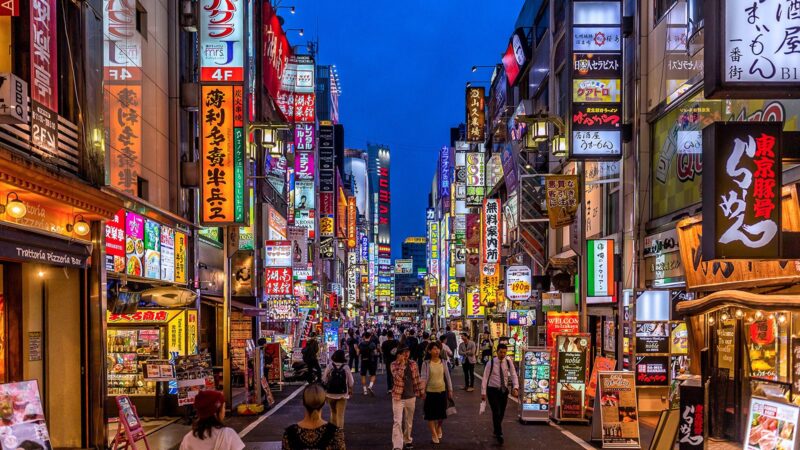
Conclusion
Japan offers something unique in every season, making it a year-round destination for travelers. The country’s breathtaking landscapes and diverse cultural experiences attract visitors from all over the world. Spring, with its enchanting cherry blossoms, and autumn, with its vibrant foliage, are the most popular times to visit Japan. These seasons showcase the country’s natural beauty at its best and provide unforgettable moments for photographers and nature enthusiasts.
In the summer, Japan comes alive with a range of outdoor activities. Travelers can embark on exciting hikes, explore mesmerizing national parks, or simply relax on the scenic beaches. The warm weather and longer days create the perfect atmosphere for adventurous pursuits.
Winter in Japan offers a magical experience, especially in the northern regions. Travelers can indulge in winter sports, such as skiing and snowboarding, in the country’s renowned ski resorts. Additionally, the winter festivals and events add a festive touch to the snowy landscapes, making it an ideal time for cultural immersion.
When planning a trip to Japan, considering the weather conditions and holidays is crucial. Consulting a Japanese climate guide and experts can provide valuable insights and help travelers choose the best time to visit based on their preferences and interests.
Whether it’s witnessing the cherry blossoms in spring, enjoying the outdoor activities in summer, admiring the autumn foliage, or experiencing the snowy wonderland in winter, Japan offers something extraordinary for every traveler.
FAQ
When is the best time to visit Japan?
The best time to visit Japan is during spring (March to May) and fall (September to November).
What is the weather like in Japan during spring?
Spring in Japan is mild and comfortable, with cherry blossoms in full bloom.
Is summer a good time to visit Japan?
Yes, summer is great for outdoor activities in Japan, though it can be hot and humid.
What is the weather like in Japan during summer?
Summer in Japan is characterized by hot and humid weather, especially in the major cities.
What is the recommended season to visit Japan?
Both spring and autumn are popular seasons to visit Japan due to the cherry blossoms and autumn foliage.
What is the weather like in Japan during autumn?
Autumn in Japan is mild and comfortable, with vibrant foliage in beautiful shades of red, orange, and yellow.
Is winter a good time to visit Japan?
Yes, winter in Japan offers a unique experience, especially in the northern regions with snowy landscapes and festive events.
What is the weather like in Japan during winter?
Winter in Japan is snowy, with opportunities for winter sports in regions like Hokkaido.
Is it recommended to visit Japan during the national holidays?
It’s important to consider Japan’s national holidays such as Shogatsu, Obon, and Golden Week, as they can be busy times for residents.
What should I pack for a trip to Japan?
It’s advisable to pack light and breathable clothing for the summer, warm clothing for the winter, and plan accordingly for the rainy season.
Can I visit Japan at any time of the year?
Yes, Japan is a year-round destination with something unique to offer in every season.
